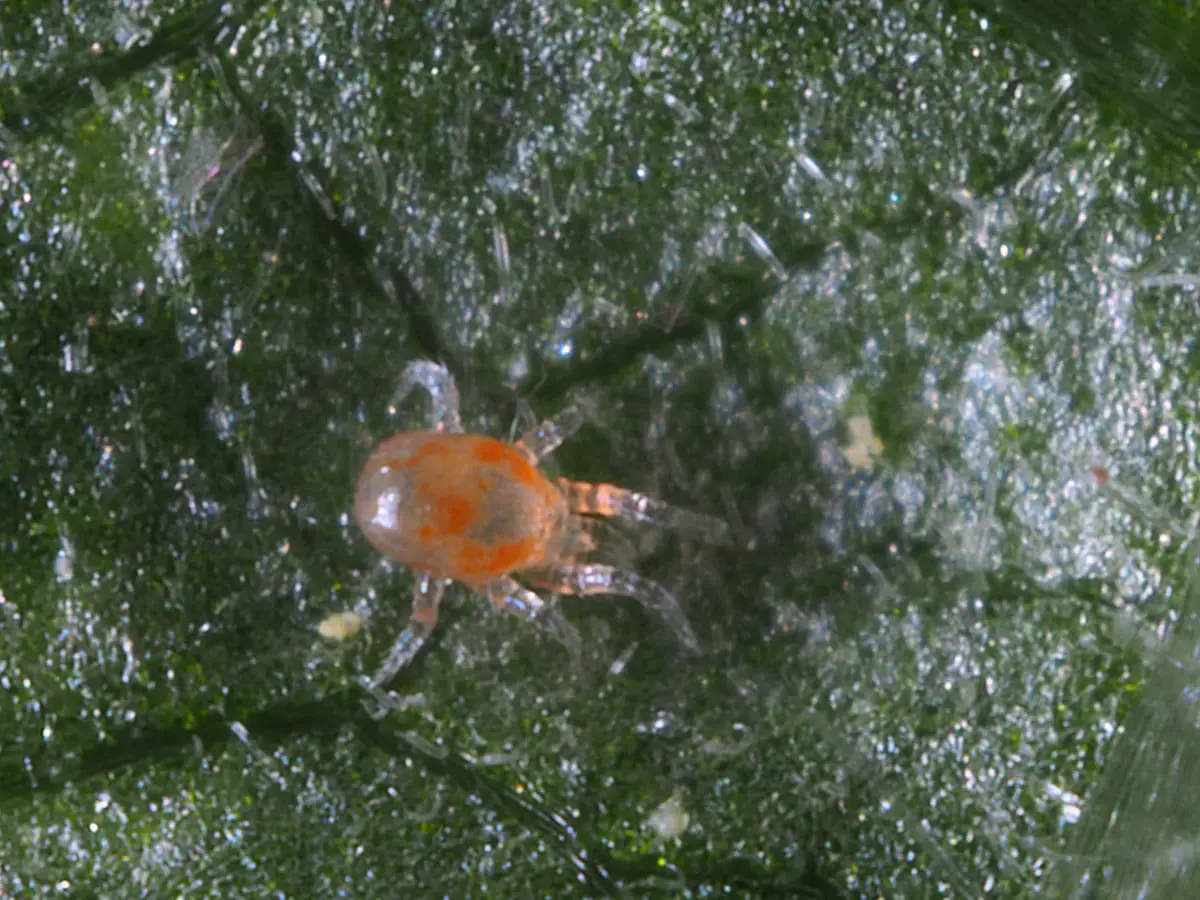

As we know, there are numerous pests in the field of agriculture and gardening. Most of these plants are small insects that seriously damage the development and growth of plants as well as two crops in general. In order to control the pests, various pesticides of chemical origin are used, but a biological control can also be carried out if we know well the characteristics of the pest. Today we are going to talk about Phytoseiulus persimilis. It is one of the most widely used phytoseides in the control of tetranychids in numerous crops found in greenhouse.
Therefore, we are going to dedicate this article to tell you everything you need to know about the Phytoseiulus persimilisits characteristics and its life cycle.
Key features


It is a jump originally from the subtropical zone of South America. Thanks to the fact that it inhabits these ecosystems, it has been able to adapt quite well and distribute widely throughout the Mediterranean area. However, we can say that it is found in so many countries given that they have been introduced in an unnatural way, that it can be said that its current range is cosmopolitan. In our country it is quite frequent and can be found abundantly in herbs to find them. These herbs make up its natural ecosystem and habitat where it spends most of its life. It can be found frequently in the entire Mediterranean coast, in Andalusia and the Canary Islands.
Regarding morphology, Phytoseiulus persimilis is capable of laying oval-shaped eggs that are twice the size of those it laysand Red spider. When these eggs are freshly laid they are pink and transparent. They can later darken as they hatch. The larvae and nymphs are pale to light red in color. When it reaches its adult stage it has a special characteristic and it is its large size and mobility. It has a pear-shaped body and has a bright red color. Its legs are long rows used to move between the leaves of the herbs. When we pass through these areas it is easily distinguishable with the naked eye.
Uses of Phytoseiulus persimilis
This insect is used mainly to control the spider mite. The spider mite is nothing more than a pest that mainly attacks crops. They tend to cause serious damage if not controlled in time. The use of these insects to control the spider mite in protected crops has given highly variable results. Some cases have been successful and others have not. Among the possible causes of the times it has been successful, it can be said that despite being an autochthonous species it is not very abundant.
All this has caused that it does not show a tolerance to high temperatures and it is frequently displaced and replaced by another indigenous phytoseid known by the name of Neoseiulus californicus.
Biological cycle


We are going to analyze what are the steps that these phytoseids follow to be able to develop and reproduce. The states that make up the biological cycle in its fullness are the egg, larva, various nymphal stages and the adult stage. The speed of development is quite fast and ports can be used as population control is quite good results. It usually has a reproduction rate higher than that of the prey under normal conditions. The fertility and the ability to consume their prey is the highest of all those found in the phytoseids. Therefore, it is a good way to control spider mites in a biological way and avoid the use of chemical products that contaminate the environment.
The duration of the biological cycle of these insects depends on the temperature apart from other factors. The eggs usually hatch in 3 days and complete their development in 10 days. This happens as long as the temperature is around 20 degrees. As soon as the temperature is modified, so does the number of days it takes for them to hatch. Its prey known as Tetranychus urticae It takes 17 days at the same temperature to be able to hatch its eggs. This makes the Phytoseiulus persimilis have an advantage over your prey.
The total development time of these insects is reduced to only 5 days, while that of the red spider to more than 7 days. And is that females can lay between 50-60 eggs throughout their life. Another essential factor that favors limiting the dynamics of populations and their development is relative humidity. We know that this parameter is the one that most influences the fertility and longevity of females. That is, depending on the value that we have of relative humidity in a constant way, the possibility of the development of the eggs and the immature stages varies. When these insects are in the egg state, they are usually more sensitive to low-lying wetlands.
If the relative humidity is below 60% it has a negative effect on the duration and development of the hatching of the eggs.
Activity of the Phytoseiulus persimilis


We know that this mite maintains effective control as long as temperatures are between 15 and 25 degrees. Usually it has its maximum activity in intervals of 60-90% relative humidity. If the temperature rises above 30 degrees the activity of these phytoseids will begin to decrease. The eggs of1 Phytoseiulus persimilis have a food source. Normally in case of being a colony of tetranychids from which the larvae emerge that remain inactive and without predation capacity.
When these evolved to protonymph and later to deutonymph (We mentioned earlier that they had two nymphal stages) they begin to search for prey on the surface of the leaves. Finally, after feeding, they begin to develop to reach their adult stage. When they are adults, they present a great predatory activity that will help us to control the populations of the red spider, among others.
I hope that with this information you can learn more about the Phytoseiulus persimilis and their characteristics.
